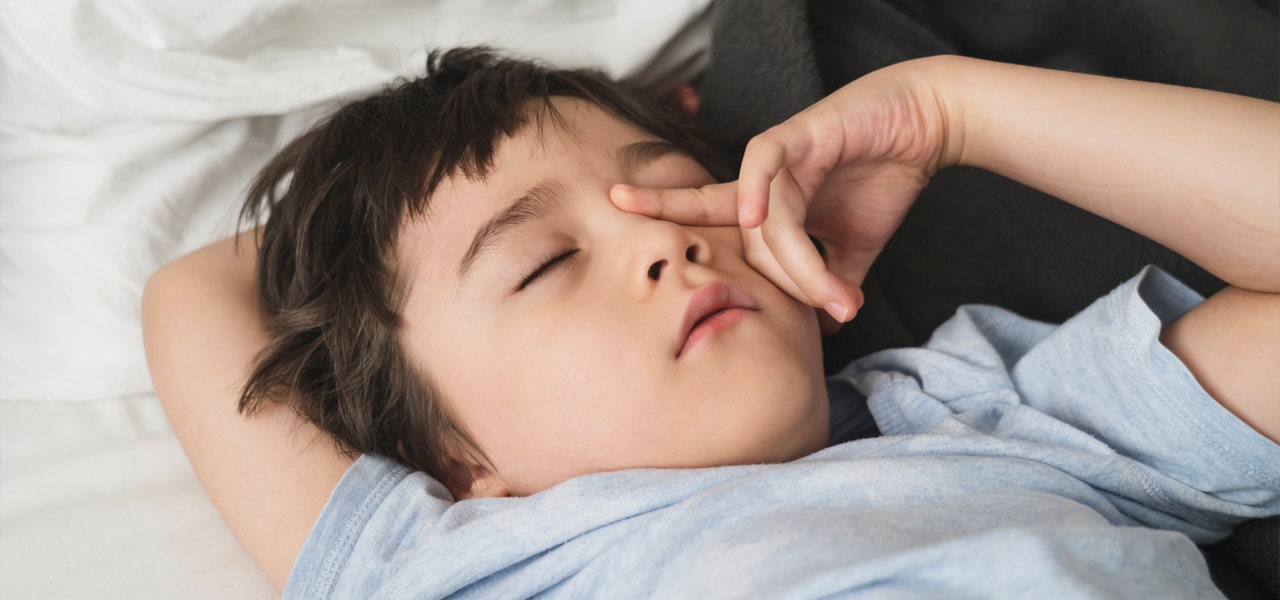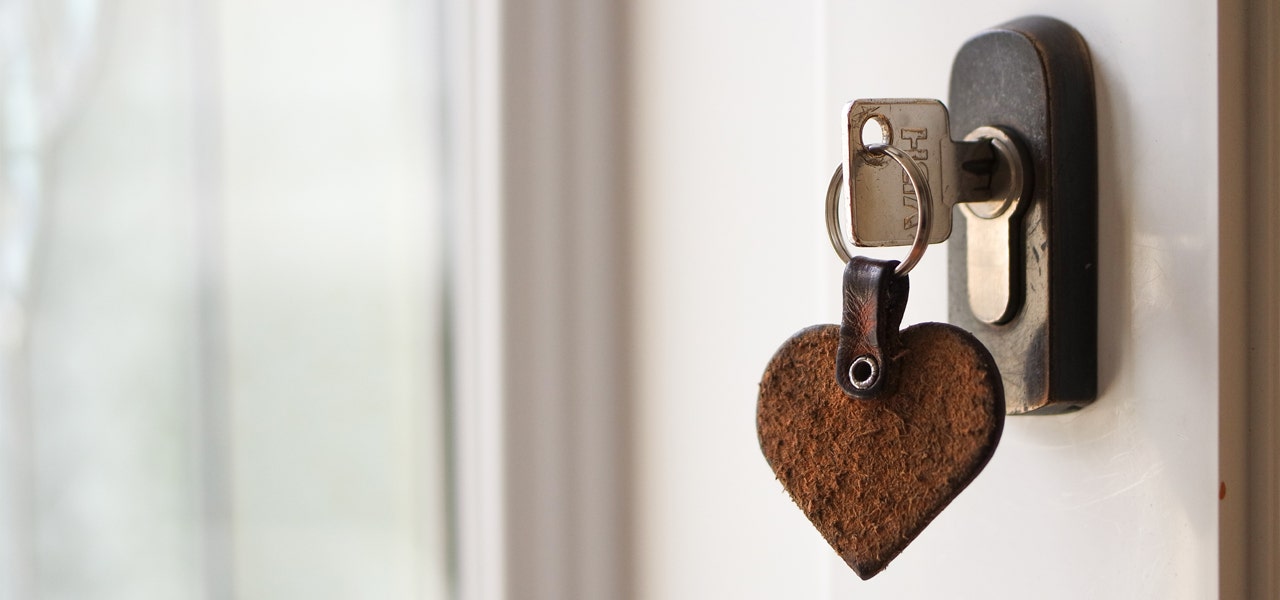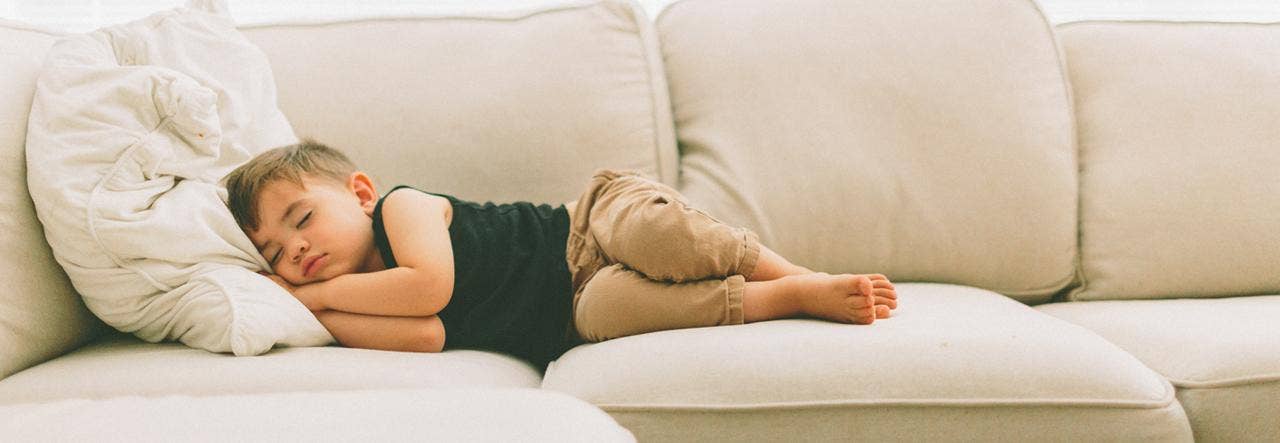If you grew up watching Saturday morning cartoons, the term “sleepwalking” may conjure some entertaining images. Tom and Jerry, The Smurfs, Rocco’s Modern World – many of our favorites made us laugh with the silly antics of a sleepwalking character. You know … the zombie-like walk, eyeballs replaced with hypnotic swirls, maybe someone eating a comically large chicken drumstick by the glow of the refrigerator light.
What a hoot!
Of course, if you’re a parent trying to keep tabs on your sleepwalking child, you know that this disorder isn’t all that funny in real life. In fact, sleepwalking can affect your child’s health and quality of life – and your own if you’re losing sleep trying to keep your little one safely tucked in bed.
Know this: you’re not alone. Sleepwalking is more common in kids than adults, and as many as 15% of children will experience sleepwalking sometime before puberty. Understanding more about how and why sleepwalking affects kids – and how you can help – can go a long way in ensuring that everyone in your home gets the sleep they need.
What Is Sleepwalking?
It sounds pretty obvious, right? Sleepwalking = walking in your sleep. That’s certainly true, but it can also refer to other behaviors.
Sleepwalking, or somnambulism, is a disruptive sleep-related disorder that usually occurs within the first couple of hours after falling asleep. Has your sleepy kid ever urinated somewhere strange, like in their closet? Or, have they woken up, gotten dressed in school clothes, and fallen back asleep with no memory of it the next morning?
Sleepwalking is likely the culprit. Essentially, any time your child performs an activity after falling asleep (eyes open but seemingly in a daze) and they have no memory of it, it’s probably sleepwalking. Additional sleepwalking symptoms include:
- Sitting up in bed and/rubbing their eyes
- Talking in their sleep
- Having eyes open but a blank or unfocused expression
- Acting extremely disoriented when awakened


What Causes Sleepwalking in a Child?
It can be tough to pinpoint what exactly is causing your kid to sleepwalk at night, and often it can be a combination of several factors. Common sleepwalking causes are:
- Stress
- Anxiety
- Fatigue
- Mild illnesses/fevers
- Full bladder/potty-training troubles
Your child may be more prone to sleepwalk if they are in an unfamiliar place (like a hotel or a relative’s house) or if their routine is otherwise disturbed. Sometimes sleepwalking can indicate something else is going in, such as a head injury, migraines, night terrors or another sleep disorder. Other times, sleepwalking is simply hereditary.
When to Call the Pediatrician


On its own, sleepwalking is not a risk to your child’s health. It is most common in younger kids and usually clears up on its around the time of puberty. However, if your kid is unable to get the sleep they need because of sleepwalking, check in with your pediatrician. Similarly, it’s a good idea to call the doc if your sleepwalking child:
- Gets frequently injured at night
- Exhibits dangerous behaviors like leaving the house or getting in the car while sleepwalking
- Sleepwalks more in the second half of the night
- Is still sleepwalking regularly in their teen years
- Gives you any concern that there is an underlying medical issue at play
Keeping Your Sleepwalking Child Safe


If your child is prone to sleepwalking, the best offense is a good defense. In other words, try to focus less on combating the sleepwalking and more on safety-proofing their nighttime existence. You can take simple preventative measures to help your kiddo avoid injury, such as:
- Locking windows and doors to the outside (and consider installing alarms)
- Guarding stairwells with baby gates
- Avoiding bunk beds and loft beds
- Keeping bedrooms and hallways clear of trip hazards
- Storing sharp, dangerous and breakable objects out of reach
- Using nightlights in bedrooms and hallways
4 Tips to Help Sleepwalking Kids Get Better Sleep
While sleepwalking often doesn’t require medical attention, it’s still a condition that can rob your child of the healthy sleep they need to thrive. There’s no tried-and-true cure for sleepwalking, but you can take steps to promote quality, restorative sleep. Here are a few tips worth trying:
1. Scheduled Awakening
Some pediatricians and sleep coaches recommend this sleepwalking treatment. Simply spend a week or two recording the time between when your child falls asleep and when they begin sleepwalking. Then start lightly rousing them about 15 minutes before they typically start sleepwalking. No need to fully wake them; just disturb their sleep enough that they stir a little. In some cases, this stops sleepwalking altogether.
2. Mindful Diet


Since a full bladder can cause sleepwalking, try limiting your child’s liquid intake in the evening and always encourage them to use the bathroom before bed. Additionally, there are many kid-friendly foods that promote sleep, such as bananas and plain yogurt, as well as foods to avoid before bed. Keep this in mind when planning dinners and bedtime snacks.
3. Relaxing, Consistent Bedtime
Consistency is key when kids are learning to recognize their own body’s sleep-readiness signs. You can encourage them by creating a bedtime routine that eases them through the transition from day to night with tangible milestones like a snack, a bath and a bedtime story. If stress or anxiety is an issue, consider adding some meditation or calming music to the routine.
4. Optimal Sleep Environment
In addition to safety-proofing your child’s room for sleepwalking hazards, you can also adjust the space to promote healthier sleep. Regulate the light with blinds or drapes, keep the room well ventilated and at a comfortable temperature, and consider a little help from a white noise machine or lavender essential oil diffuser.
Of course, at Naturepedic, we know the value of safer, healthier mattresses and bedding too. We offer certified organic kids mattresses designed with kids’ growing bodies in mind, as well as certified organic sheet sets and pillows for comfy sleep without all the chemicals found in conventional mattresses and bedding.
Sleepwalking can cause a lot of stress for parents and kids, but try to remember that it’s fairly common and usually not a cause for major concern. And, despite the worry, sometimes it can make you chuckle like the old cartoons. So, be prepared and mindful, but also try to keep your own stress over the issue in check. Here’s to better sleep for all!
 BABY
BABY  KIDS
KIDS  ADULT
ADULT  LEARN
LEARN  STORES
STORES 